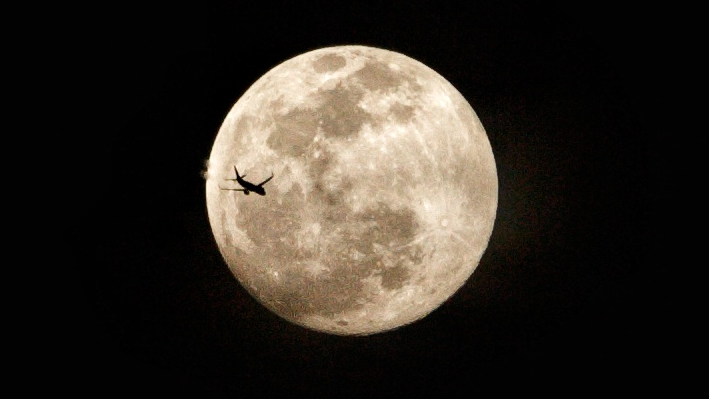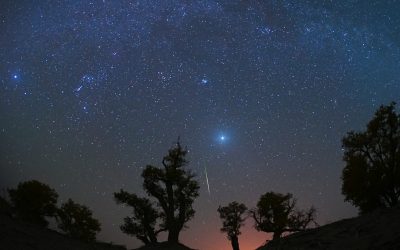On the nights of October 6th and 7th, a magnificent Harvest Supermoon captivated observers, delivering a spectacular celestial display. The moon appeared exceptionally large and brilliant as it ascended over the eastern horizon, sharing the firmament with Saturn, which was visible just to its right among the stars of the constellation Pisces.
The full moon that occurs nearest to the autumn equinox is traditionally called the Harvest Moon, a name stemming from its historical significance. Before the advent of artificial lighting, its luminous glow provided crucial illumination, enabling farmers to work late into the night, gathering crops from their fields before the onset of harsh weather. The 2025 Harvest Moon, set to appear in October, will be particularly noteworthy as it coincides with the moon reaching its lowest point in its 27-day elliptical orbit of Earth, promising a spectacular supermoon event.
A supermoon presents a magnificent celestial event, with the lunar disc appearing up to 14% larger and 30% brighter than its average state. This striking display unfolds as the moon ascends from the eastern horizon, positioned directly opposite the setting sun in the west, bathing the night sky in its intensified reflected light.
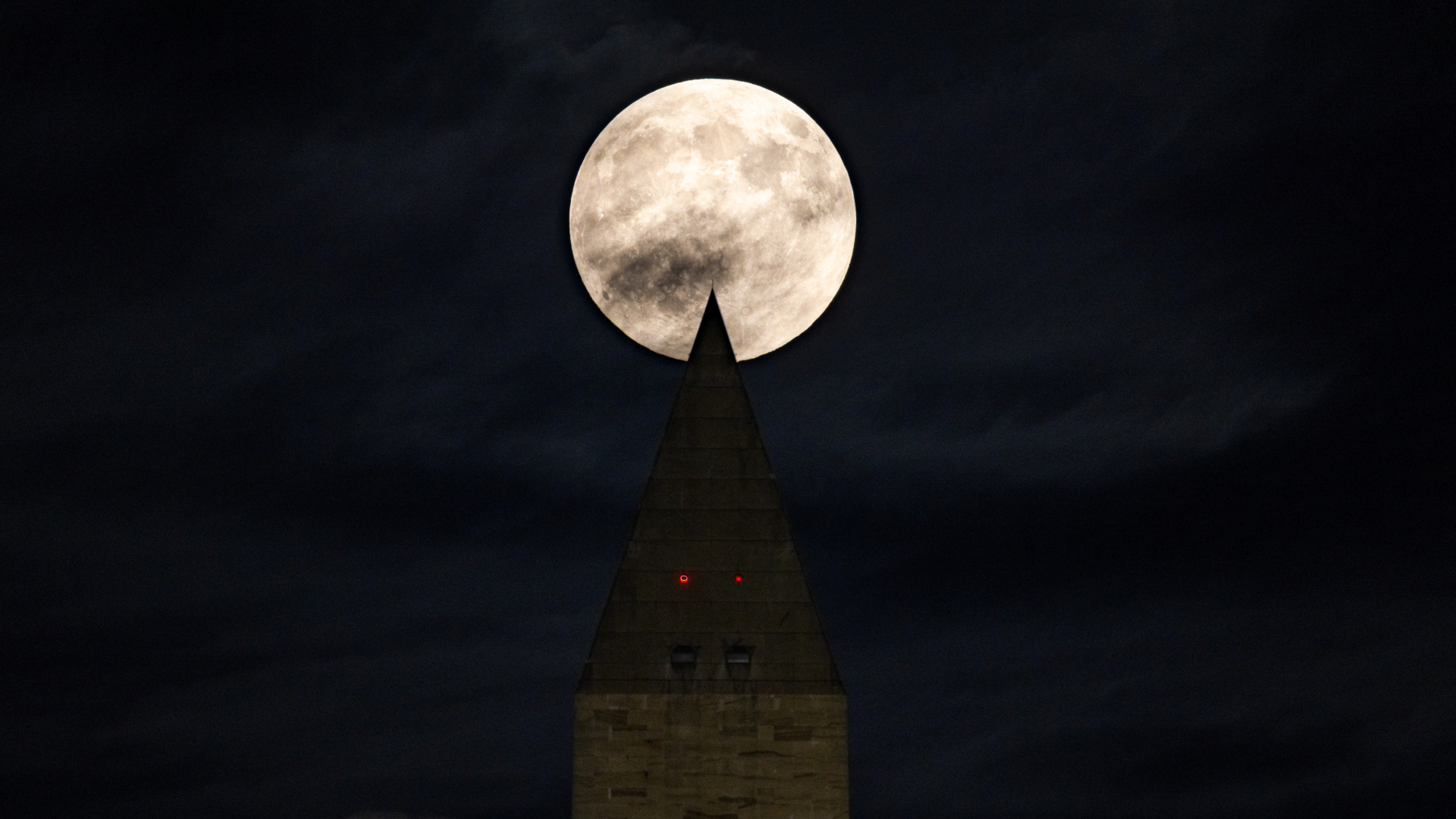
Astrophotographers worldwide have captured a spectacular array of images showcasing the recently visible full Harvest Supermoon. For those who may have missed its rise on October 6, the moon will continue to present a full appearance for casual observers over the subsequent one to two days, providing further opportunities for viewing.
On October 6th, photographer Austin DeSisto captured a remarkable image of the full Harvest Moon. The celestial body was seen precisely positioned behind the pinnacle of the Washington Monument in Washington D.C. The moon’s surface displayed a noticeably darkened appearance, a visual effect caused by ethereal cloud wisps combining with the deep tones of ancient, solidified lava flows.
Veteran photographer Gary Hershorn captured a striking image of a ‘yellow supermoon’ on October 6, appearing to hang directly over New York’s Statue of Liberty. The captivating sunset scene was photographed from New Jersey City.
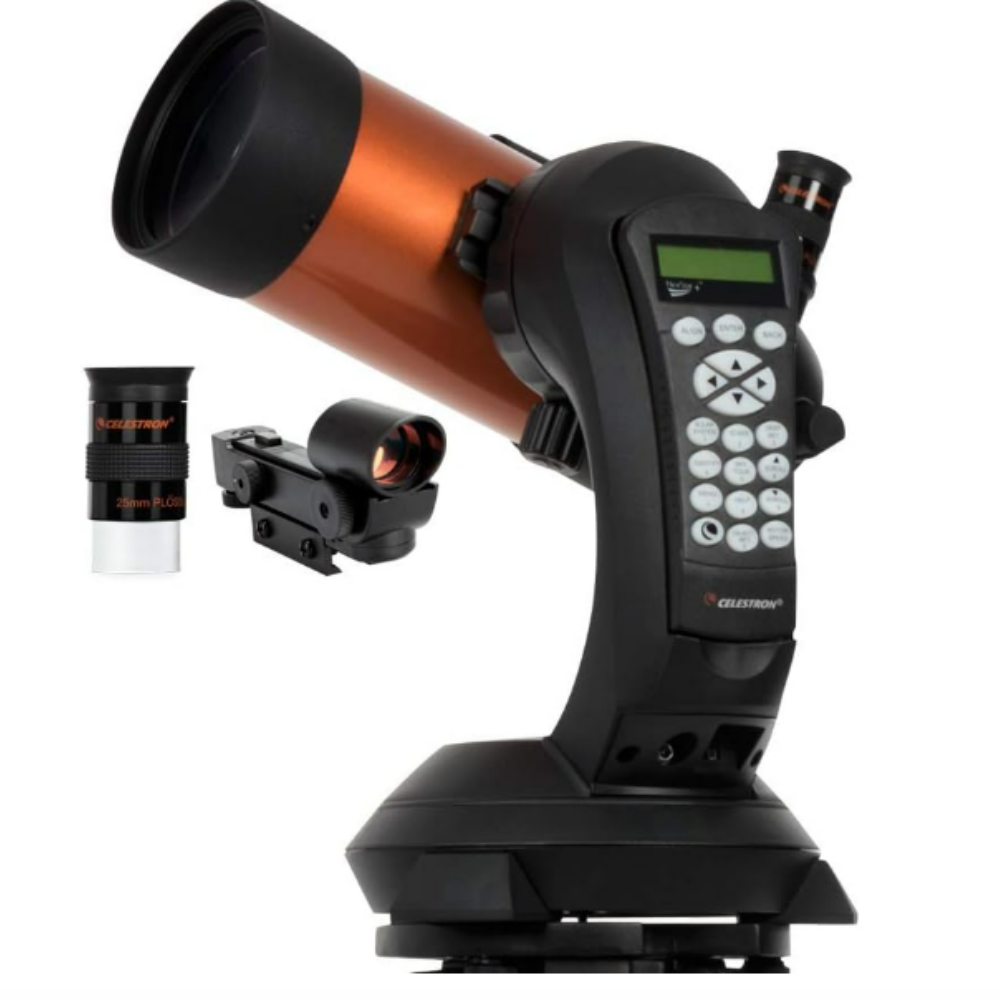
The moon’s distinct yellow or orange coloration stems from a phenomenon known as Rayleigh Scattering. Earth’s dense atmosphere preferentially scatters shorter, bluer wavelengths of light, while longer, redder wavelengths are permitted to pass through with less interference. This atmospheric effect often results in our natural satellite appearing a striking yellow-orange, particularly when observed close to the horizon.
On the evening of October 5, photographer Hershorn documented the striking Harvest Supermoon as it appeared alongside the EdgeNYC observation deck in New York. The celestial display featured a slender portion of the moon’s left flank still unlit by direct solar rays.
Astrophotographer Amartya Mishra recently captured a strikingly detailed image of the Harvest Moon as it graced the skies above Kathmandu, Nepal. The photograph was taken at 9 p.m. local time on October 6. Mishra described the celestial event as the year’s inaugural supermoon, noting that the lunar body appeared distinctly brighter and larger than typical, casting a serene luminescence across the night sky.
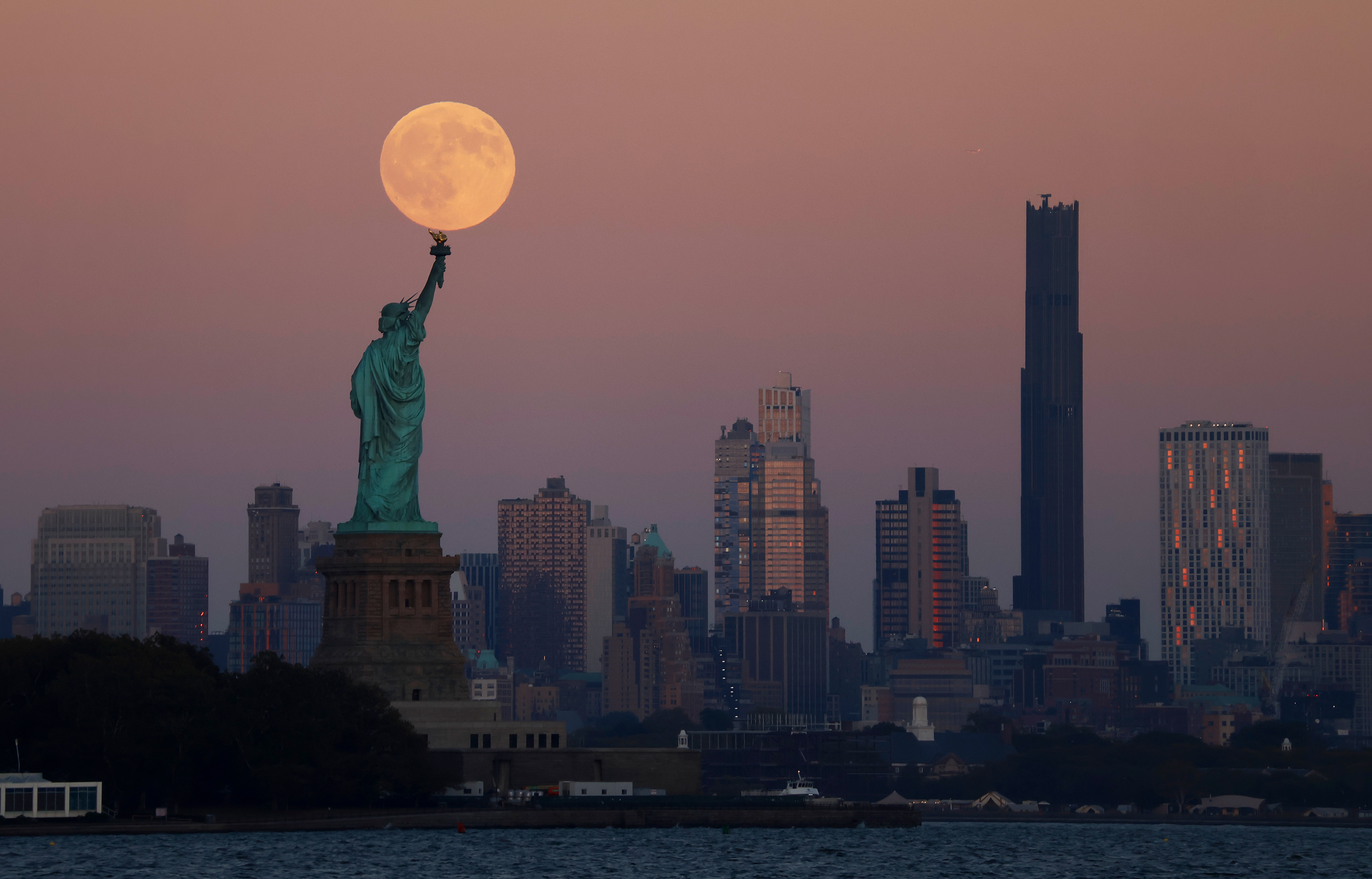
The lunar surface presents a dramatic tableau of expansive, dark lunar maria, often referred to as ‘lunar seas.’ These vast plains are dramatically crisscrossed by brilliant streaks of impact ejecta, hurled outwards from prominent craters such as Copernicus, Kepler, and the more southerly Tycho. The landscape also features numerous impressive mountain ranges, including the sweeping arc of Montes Apenninus situated just above the lunar equator, and Montes Jura, visible further to the north.
Photographer Gong Xianming captured a breathtaking image of the full Harvest Supermoon in Jinhua, China. The celestial event occurred during the Mid-Autumn Festival, also known as the Moon Festival. This ancient celebration, which ChinaHighlights.com traces back 3,000 years to the Zhou Dynasty, traditionally gathers family and friends for reunion, moon appreciation, and the enjoyment of mooncakes.
Photographer Lorenzo Di Cola captured a striking image of the moon, seemingly suspended above a cloudbank that settled over the tranquil hills near L’Aquila, Italy. In the distant landscape, the historic Rocca Calascio Castle and the Santa Maria della Pietà church were visible on the horizon.
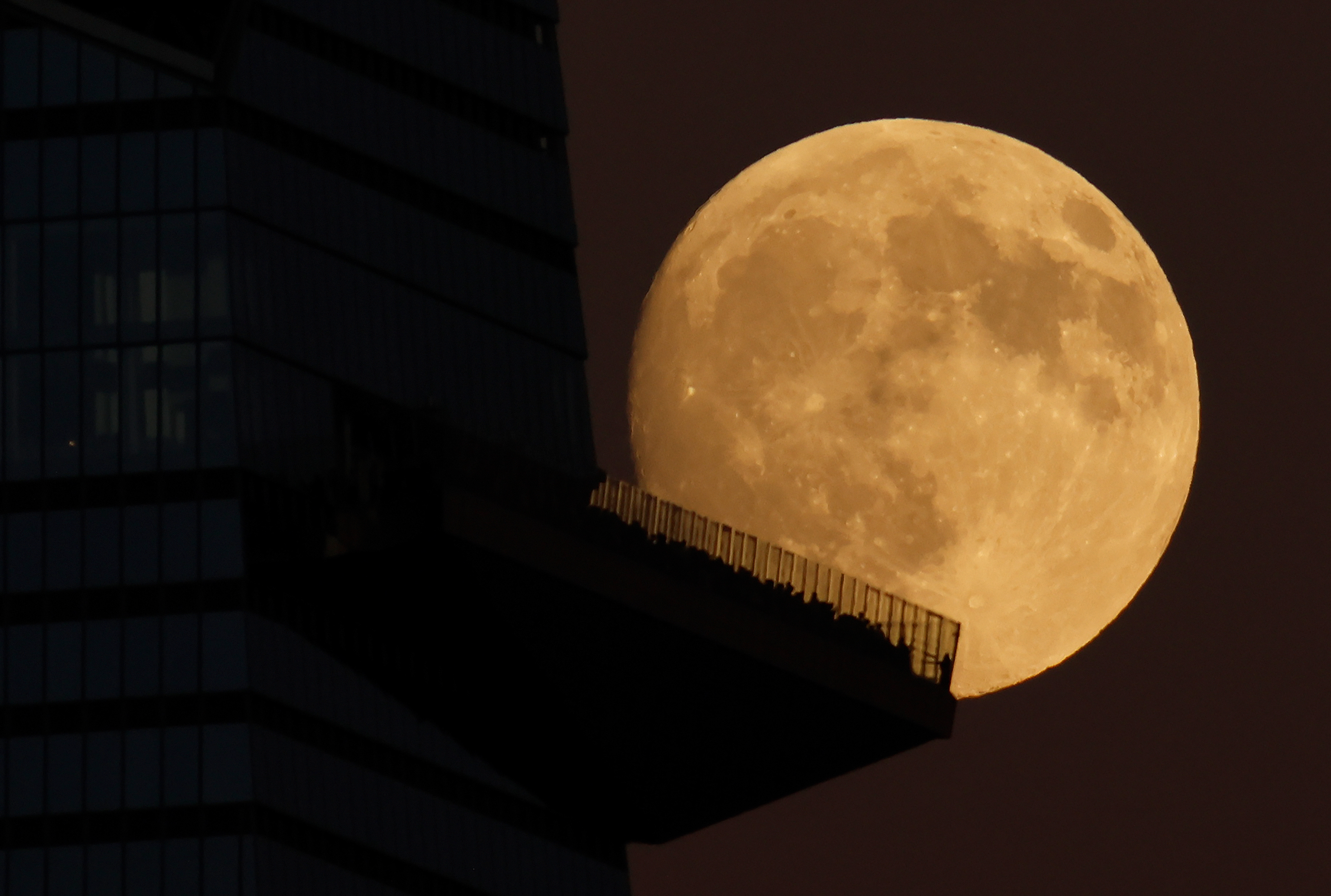
From Indonesia’s West Java province, Aditya Irawan captured a remarkable photograph on October 6, showing a passenger jet silhouetted against the radiant Harvest Moon. At the time of this precisely timed shot, the moon was roughly 361,000 kilometers from Earth. This striking alignment occurred just two days prior to the moon’s closest monthly approach to our planet, an event known as Perigee, which took place on October 8, according to data from In-the-sky.org.
A striking, colorful view of the full moon was recently captured by X user loonarpix from Palayan City, Philippines. The impressive celestial photograph was achieved using a Nikon D3300 camera paired with an F70060 refractor telescope.
On the night of October 6, X user Rami Ammoun captured a series of captivating photographs depicting the Harvest Moon. His shots highlighted the celestial body glowing with an ethereal silvery light as it drew closer to Earth, anticipating its perigee.
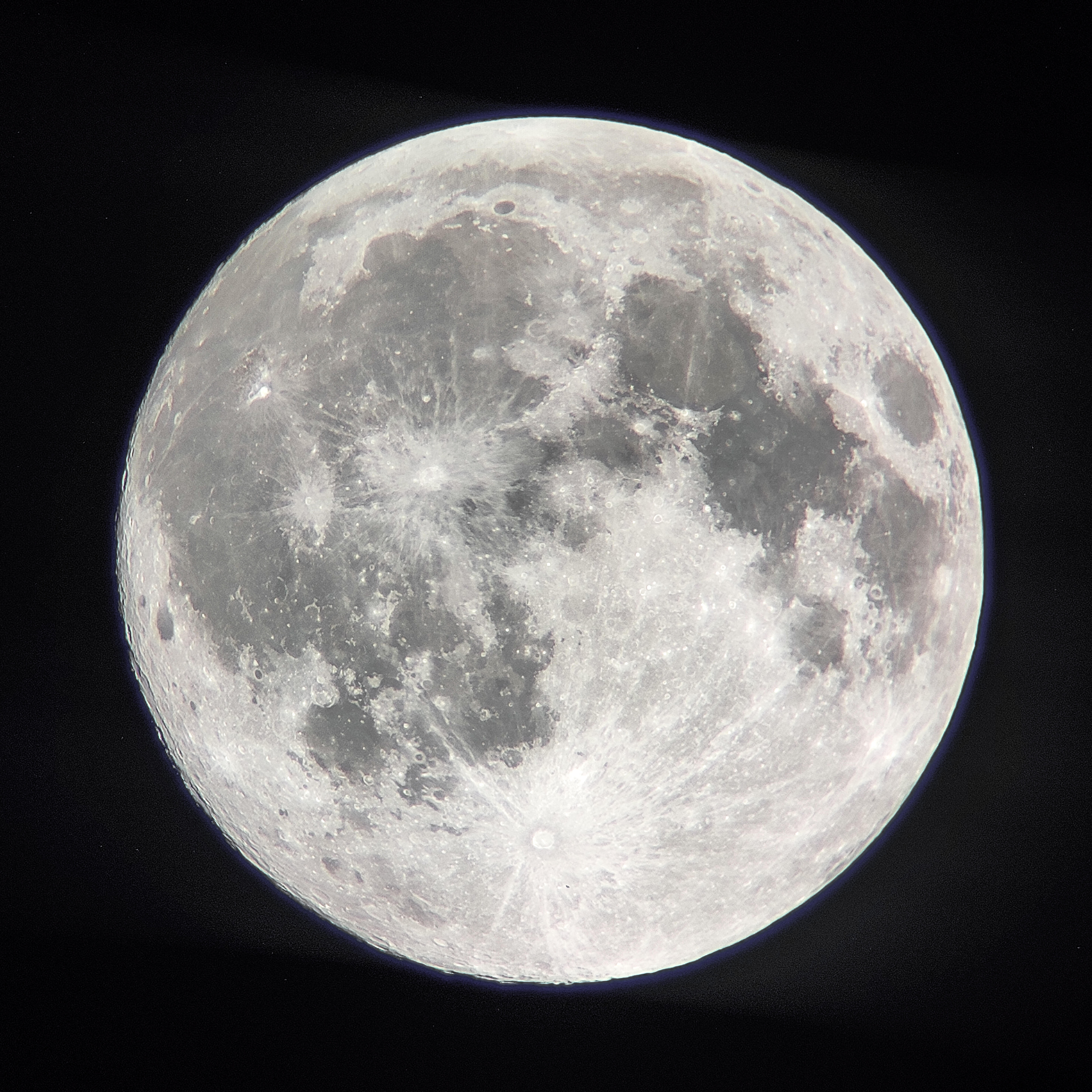
Following October’s lunar display, three more supermoons are anticipated in November, December, and January 2026.
Space.com invites readers to submit their astrophotography for potential publication. Those wishing to share their stellar captures should forward their images, along with any accompanying comments, their full name, and geographical location, to spacephotos@space.com.

